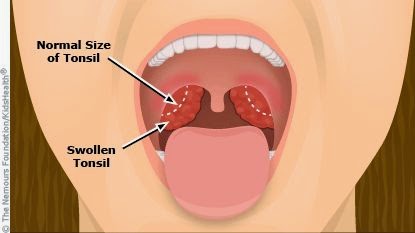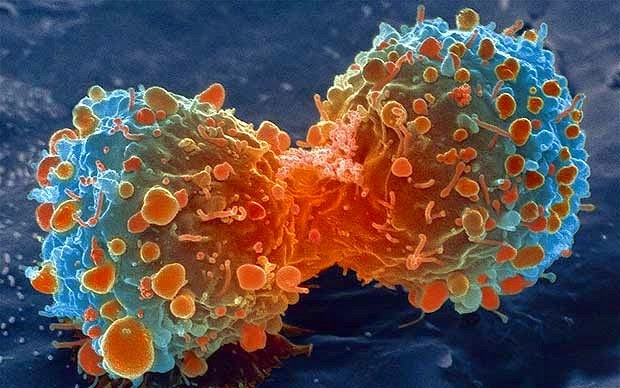I happen to know somebody who is going through the nasty pain of tonsilitis at the moment. This pushed my curious button as to what tonsils are, their exact functions to the body and how they get infected. Of course this knowledge would be a waste if I did not find out possible treatments and preventive measures as well. Please, do share with me.
WHAT ARE TONSILS ?
The tonsils and adenoids are thought to assist the body in its defense against incoming bacteria and viruses by helping the body form antibodies. They provide this function by filtering the air we breathe in and trapping unwanted microorganisms. However, this function may only be important during the first year of life. There is no evidence to support a significant role of the tonsils and adenoids in immunity. Sometimes the tonsils themselves get infected and inflamed by the microorganisms they trap. Medical studies have shown that children who have their tonsils and adenoids removed suffer no loss in their future immunity to disease or ability to ward off infections.
(adsbygoogle = window.adsbygoogle || []).push({});
Symptoms of tonsillitis
The symptoms of tonsillitis include:
*White or yellow spots of pus on the tonsils
*Sore throat – although some children complain of pain in their tummy, rather than a sore throat
*Swollen lymph glands under each side of the jaw
*Pain when swallowing
*Fever
*Bad breath.
Bacteria, viruses and tonsillitis
When tonsillitis is caused by bacteria (about 15 per cent of all tonsil infections), it is usually a streptococcus bacterium. It is not easy to tell when tonsillitis is caused by bacteria – A doctor may do a throat swab (gently rubbing sterile cotton wool on a stick over the tonsil) and send it for testing.
There are many viruses that can cause tonsillitis. Antibiotics do not help if the tonsillitis is caused by a viral infection.
Complications of Tonsillitis
Tonsillitis can lead to a number of complications, including:
A.) Chronic tonsillitis – Infection of the tonsils which does not clear up. The person may go on feeling unwell and tired
B.) Secondary infections – the infection can spread to the person’s nose, sinuses or ears
C.) Glue ear (otitis media) in children – the adenoids are part of the same group of lymph nodes as tonsils. When the adenoids swell up (usually when the tonsils are also large), they can block the Eustachian tube, which goes from the back of the throat to the middle ear. This is the thin tube that you push air along when you ‘pop’ your ear. If this tube stays blocked most of the time, sticky fluid forms in the middle ear which interferes with hearing. This is called a glue ear.
D.) Quinsy – if the infection spreads into the tissue around the tonsils, an abscess can form in the throat, also known as a peri-tonsillar abscess. This causes severe pain and can interfere with swallowing and even breathing. Antibiotics may help, but sometimes an operation is needed to drain the abscess.
Treatment of tonsillitis
Treatment of tonsillitis usually involves keeping the patient comfortable while the illness runs its course. This supportive care includes bed rest, drinking extra fluids, gargling with warm salt water, and taking pain relievers—usually NSAIDs—to reduce fever. Frozen juice bars and cold fruit drinks can bring some temporary relief of sore throat pain; drinking warm tea or broth can be soothing. If the throat culture shows that S. pyogenes is present, penicillin or other antibiotics will be prescribed. An injection of benzathine or procaine penicillin may be most effective in treating the infection, but it is also painful. If an oral antibiotic is prescribed, it must be taken for the full course of treatment, usually 10-14 days. If the patient has several episodes of severe tonsillitis, the doctor may recommend a tonsillectomy, which is the surgical removal of the tonsils.
Since most attacks of tonsillitis are caused by viruses, most of the treatment is aimed at helping to relieve the symptoms such as pain and fever. Paracetamol can help and the person should rest. Most children with tonsillitis do not feel well and it hurts them to swallow. Try cool drinks (cold drinks can hurt), ice blocks and ice cream. Don’t worry if a child stops eating for a day or two. Usually, they pick up quickly when the infection has gone.
For tonsillitis that is caused by bacteria, antibiotics are prescribed.
Tonsillectomy
If attacks of tonsillitis become frequent and severe, or cause complications, your doctor might suggest an operation, known as tonsillectomy.
Reasons for tonsillectomy can include:
1.) Recurrent bouts of tonsillitis accompanied by pain, discomfort and high temperature (fever).
2.) Chronic tonsillitis that doesn’t clear up with antibiotics.
3.) Frequent ear infections associated with tonsillitis
4.) Breathing difficulties due to enlarged tonsils
5.) Abscesses forming in the throat (peri-tonsillar abscesses or quinsy)
6.) Failure to thrive because of difficulty in swallowing due to frequent infection and enlargement of their tonsils.
Medical issues to consider before tonsillectomy
Before doing a tonsillectomy, your doctor will give you a complete physical check-up. The tonsil pad has a large blood supply, and special note will be taken whether you have any abnormal bleeding tendencies. Your doctor will check to see if your tonsils are actively inflamed and, if so, will prescribe antibiotics for a few weeks to control the infection before the surgery.
Tonsillectomy Procedure
A tonsillectomy is performed under general anaesthesia. The surgeon props open the person’s mouth and clamps their tonsils with special instruments. The glandular tissue is contained inside a skin lining which the surgeon cuts using scalpel, scissors, laser or an electric current (electrocautery). The surgeon then removes the tonsils. Each tonsil pad has a substantial blood supply, so electrocautery is often used to fuse the blood vessels and reduce the risk of haemorrhage.
Prognosis
Tonsillitis usually resolves within a few days with rest and supportive care. Treating the symptoms of sore throat and fever will make the patient more comfortable. If fever persists for more than 48 hours, however, or is higher than 102°F, the patient should be seen by a doctor. If antibiotics are prescribed to treat an infection, they should be taken as directed for the complete course of treatment, even if the patient starts to feel better in a few days. Prolonged symptoms may indicate that the patient has other upper respiratory infections, most commonly in the ears or sinuses. An abscess behind the tonsil (a peritonsillar abscess) may also occur. In rare cases, a persistent sore throat may point to more serious conditions, such as rheumatic fever or pneumonia.
Prevention
The bacteria and viruses that cause tonsillitis are easily spread from person to person. It is not unusual for an entire family or several students in the same classroom to come down with similar symptoms, especially if S. pyogenes is the cause. The risk of transmission can be lowered by avoiding exposure to anyone who already has tonsillitis or a sore throat. Drinking glasses and eating utensils should not be shared and should be washed in hot, soapy water before reuse. Old toothbrushes should be replaced to prevent reinfection. People who are caring for someone with tonsillitis should wash their hands frequently, to prevent spreading the infection to others.






